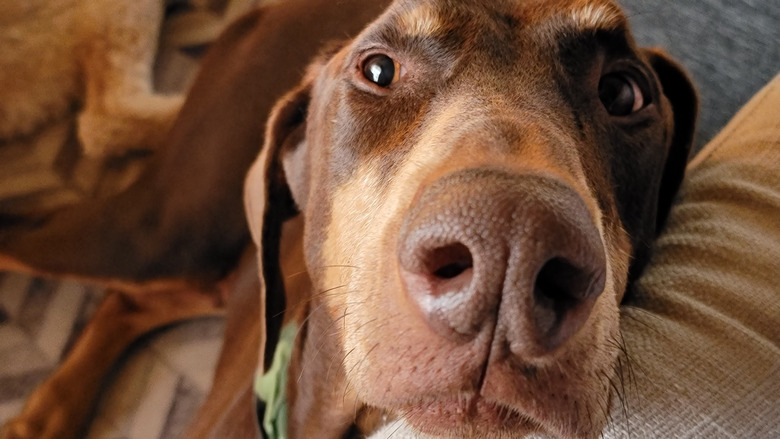Lab Mix With Doberman: Your Guide To Labrador Doberman Mix Puppies
Cross a Labrador retriever and a Doberman pinscher, and the result is a "designer dog" known as the Doberdor. Like any mixed breed, the Doberdor takes on qualities of both parents. It's difficult to predict exactly what the puppy will look like when full grown. This Doberman mixed with Labrador makes sense for a person who wants certain Doberman traits in a dog, but doesn't want to deal with all the genetic issues facing that breed.
Some people call the Lab Doberman mix Labraman instead of Doberdor. These dogs are loyal, protective, and make great guard dogs. They are also playful and high-energy so they need a lot of exercise and play time. A fenced-in yard is a must, as well as an experienced dog person to parent this tricky breed mix.
The Labrador mix with Doberman canine is estimated to live 10 to 14 years, will grow to between 60 and 100 ponds, and just over two feet in height. The Doberdor, or Labraman, will have a strong prey drive, the propensity for barking, and the possibility to take off wandering. Doberdor puppies are not easy to train even though they are highly intelligent. They do not shed much, and are somewhat friendly with kids, family, and other dogs — but not necessarily friendly toward strangers, which may not be a bad thing. They do best in warm weather, and need companionship.
The athletic Labrador retriever
Bred as a sporting dog, the Labrador retriever might truly be "man's best friend," based on his constant placing at the top of the American Kennel Club's list of annual registrations. When full grown, male Labrador retrievers stand between 22.5 to 24.5 inches tall at the shoulder, with females standing between 21.5 to 23.5 inches high. Labs weigh between 55 and 80 pounds. The breed appears in three shades: black, chocolate or yellow. Muscular and athletic, Labs excel as hunting, service and therapy dogs, as well as family pets.
Doberman pinscher elegance
At maturity, the male Doberman pinscher stands approximately 27.5 inches tall at the shoulder, with females slightly smaller at 25.5 inches. Adults weigh between 66 and 88 pounds. The Dobie is square and compact, with a short coat. He's an elegant animal with a graceful carriage. While the black and rust Doberman pinscher is perhaps the best known, other acceptable breed colors include blue and rust, fawn and rust and red and rust.
Floppy ears and wagging tails
Your Doberdor might have the short, sleek coat of the Dobie, or the thicker, double coat of the Lab. If he inherits the latter, he's likely to shed substantially. Don't expect erect ears, as commonly seen in Dobermans, unless the breeder has had them cropped. Doberman ears naturally flop, and don't look that different from the Lab. The same holds true for the tail. He could boast the otter tail of the Lab, or the rather unattractive natural rat tail of the Dobie.
Training is key for temperament
While the Lab was developed as a hunting dog, Louis Doberman created the breed bearing his name as a protection animal. While the Dobie is a first rate watchdog, the Lab, not so much. One thing is certain: This dog requires training. He'll grow up to be a big, strong canine. Both breeds make good family dogs, and both excel in canine sports. While the Lab generally gets along with other dogs, that's less true of the Doberman.
Doberman Lab mix longevity
With luck, your mixed breed will live longer than the average Doberman, which is only about 10 years. In fact, if a registered Dobie makes it to age 10, he's eligible for a certificate from the Doberman Pinscher Club of America. Genetic heart disease contributes to this shortened life span. Labs generally live to 12 or 14 years of age. Labs are prone to hip dysplasia and certain eye conditions.
